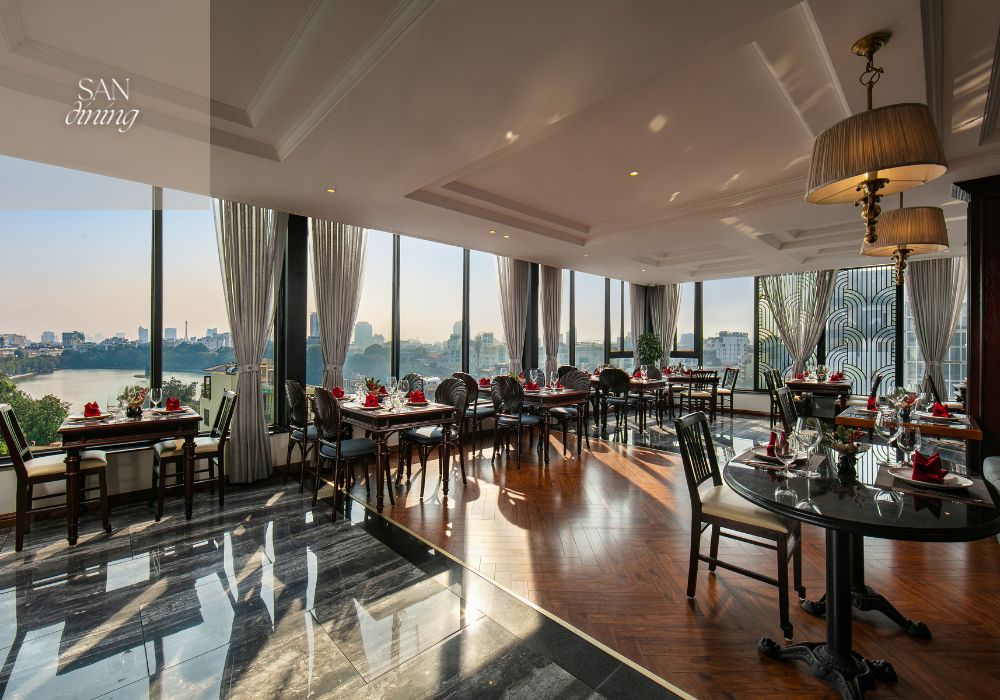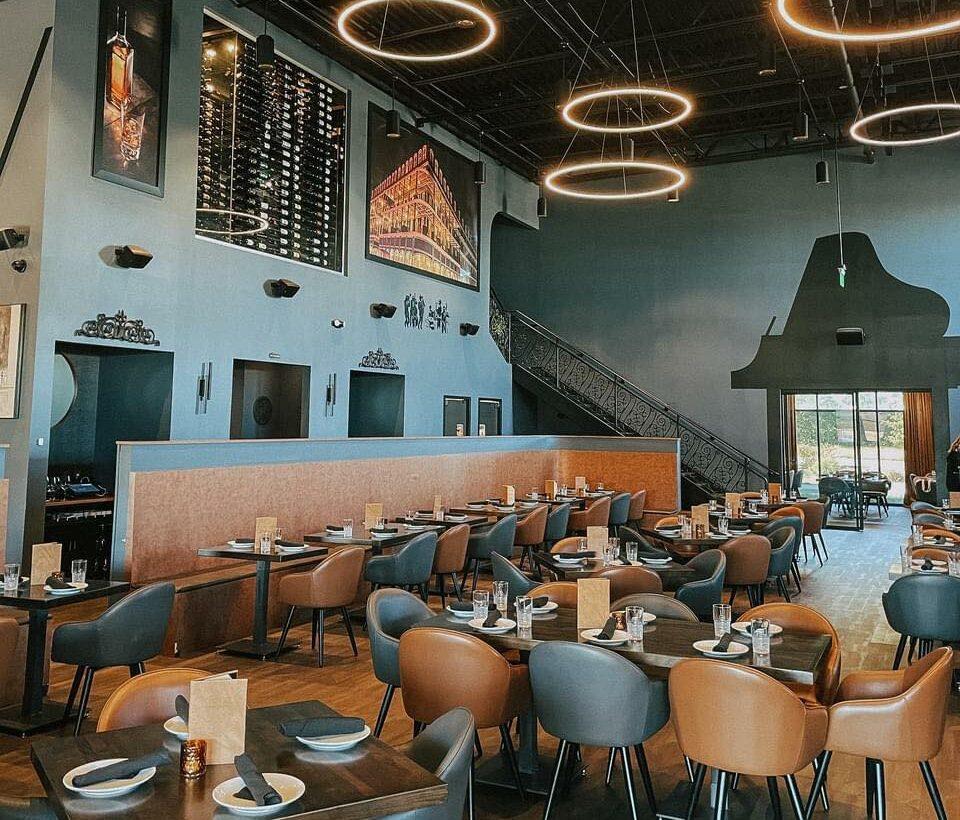Savor Authentic Eastern Food With a Pan-Asian Twist for a Culinary Adventure
Getting started on a cooking trip through authentic Eastern cuisine, boosted with a Pan-Asian spin, provides an unique possibility to discover the rich tapestry of flavors that define the area's diverse cooking practices. As you consider these attracting recipes, take into consideration the cultural narratives and historic influences that form them, each bite offering a story waiting to be found. pan asian dining Islamabad.

Exploring Pan-Asian Flavors
In the world of international gastronomy, Pan-Asian food attracts attention for its exceptional diversity and the unified interaction of tastes from numerous Eastern cultures. This culinary method commemorates the rich traditions and unique ingredients located throughout the continent, developing a tapestry of preferences that is both gratifying and interesting. Key to Pan-Asian food is its capacity to balance contrasting tastes-- pleasant, salty, spicy, and sour-- while highlighting the quality and top quality of each ingredient.
From the umami-rich soy sauce of Japan to the intense chili peppers of Thailand, Pan-Asian cuisine supplies an extensive palette of flavors. These elements are frequently combined in innovative methods, improving recipes with layers of intricacy. For instance, using aromatic herbs such as lemongrass and cilantro, typical in Vietnamese and Thai food, includes a rejuvenating brightness to meals, while the unification of coconut milk supplies a velvety, abundant appearance.
The focus on fresh produce and aromatic spices ensures that each meal is not only a banquet for the preference buds however additionally for the detects. Pan-Asian food invites diners to embark on a cooking journey, checking out the substantial and varied landscapes of Asian gastronomy with every bite.
Combination Dishes to Attempt
While Pan-Asian food is commemorated for its standard flavors, the modern cooking landscape is increasingly welcoming fusion meals that mix these traditional aspects with impacts from other regions. This cutting-edge method not only honors the abundant heritage of Eastern cookeries however likewise presents unique preference experiences that interest modern tastes buds.
A prime example of such a blend recipe is the Korean-Mexican taco, where marinaded bulgogi beef is covered in a warm tortilla, topped with kimchi and a hot gochujang-infused salsa. This combination weds the strong, savory tastes of Korea with the vibrant, fresh elements of Mexican cuisine. Similarly, sushi burritos have actually acquired appeal, joining together the fragile artistry of Japanese sushi with the hearty, hand-held convenience of a burrito, typically featuring blend ingredients like tempura shrimp and avocado with a drizzle of wasabi mayo.
One more significant dish is Thai curry ramen, which infuses the creamy, aromatic flavors of Thai curry into the comforting brew of standard Japanese ramen, producing a harmonious mix that tantalizes the detects. These combination recipes prolong beyond simple novelty; they represent a cooking discussion between cultures, motivating exploration and innovation worldwide of Pan-Asian cuisine.
Necessary Components and Seasonings
To truly value Pan-Asian cuisine, one should understand the necessary ingredients and spices that develop its foundation. This diverse culinary design draws from an abundant tapestry of Oriental traditions, employing a harmonious mix of tastes and textures.
Aromatic elements are pivotal, with ginger, garlic, and lemongrass being ubiquitous throughout various Pan-Asian recipes. These active ingredients provide an aromatic base that improves the intricacy of flavors. Spices such as star anise, cardamom, and cinnamon introduce heat and personality, resembling influences from areas like China and India.

Food Preparation Techniques and Tips
Grasping the art of Pan-Asian cuisine needs knowledge with its distinct cooking methods, each adding to the lively tapestry of tastes this cooking tradition is commemorated for. Central to these approaches is the stir-fry, a rapid cooking technique that maintains the nutritional honesty and vibrant colors of components. Making use of a wok, the stir-fry approach enables even warm distribution, important for attaining the particular structure and flavor balance of Pan-Asian meals.
One more fundamental technique is steaming, particularly common in Chinese cuisine. This gentle approach keeps the all-natural flavors and nutrients of components, making it perfect for seafood and vegetables. Dumplings, a cherished staple, frequently gain from steaming, resulting in soft, succulent appearances.
Grilling, also important, presents great smoky midsts to recipes such as Oriental bulgogi or Japanese yakitori (pan asian dining Islamabad). This method frequently involves marinating components, allowing flavors to pass through deeply before cooking over an open flame or warmer
Lastly, understanding the art of stabilizing tastes-- wonderful, sour, salted, bitter, and umami-- is important. Effectively layering these aspects can boost a dish from normal to remarkable, providing a complex and pleasing cooking experience that personifies the significance of Pan-Asian cuisine.
Eating Experiences Worldwide
Around the world, Pan-Asian food uses an exceptional eating experience, celebrated for its rich tapestry of flavors and vivid presentations. This culinary phenomenon has actually transcended social limits, catching the hearts and palates of food fanatics worldwide. In multicultural cities like New York, London, and Sydney, Pan-Asian restaurants function as visit the website fusions where culinary customs from Thailand, Japan, China, and past merge, offering diners with an eclectic mix of recipes that highlight the region's diversity.
The global allure of Pan-Asian cuisine lies in its capacity to provide both authenticity and advancement. chuck e cheese pizza Cooks skillfully wed typical components such as lemongrass, soy sauce, and miso with modern strategies, leading to recipes that are both refreshingly brand-new and familiar. This fusion permits restaurants to begin on a cooking journey that appreciates heritage while accepting modernity.
In addition, eating experiences are boosted through thoughtfully made environments that reflect the ethos of Pan-Asian aesthetic appeals. From minimal Japanese-inspired insides to vivid Thai-themed areas, each dining establishment provides an unique atmosphere that matches the culinary offerings. Because of this, clients are not just eating a meal yet partaking in a cultural experience, making Pan-Asian dining an absolutely international sensation.
Conclusion
The exploration of Pan-Asian food provides a profound understanding of the complex interplay of tastes and culinary practices throughout Asia. By embracing fusion dishes such as Thai curry ramen and sushi burritos, the culinary trip not just highlights the flexibility of traditional components however likewise showcases innovative modern strategies. This gastronomic journey, enhanced by cooking approaches and necessary spices, supplies a distinct possibility to value the cultural diversity and culinary virtuosity that specify Pan-Asian food on an international range.
Beginning on a culinary journey through authentic Eastern cuisine, boosted with a Pan-Asian twist, provides an unique opportunity to discover the abundant tapestry of flavors that define the area's varied culinary practices.In the realm of global gastronomy, Pan-Asian food stands out for its amazing variety and the harmonious interplay of tastes from various Asian cultures. Trick to Pan-Asian food is its capacity to balance contrasting flavors-- wonderful, salty, spicy, and sour-- while highlighting the freshness and high quality of each active ingredient.
